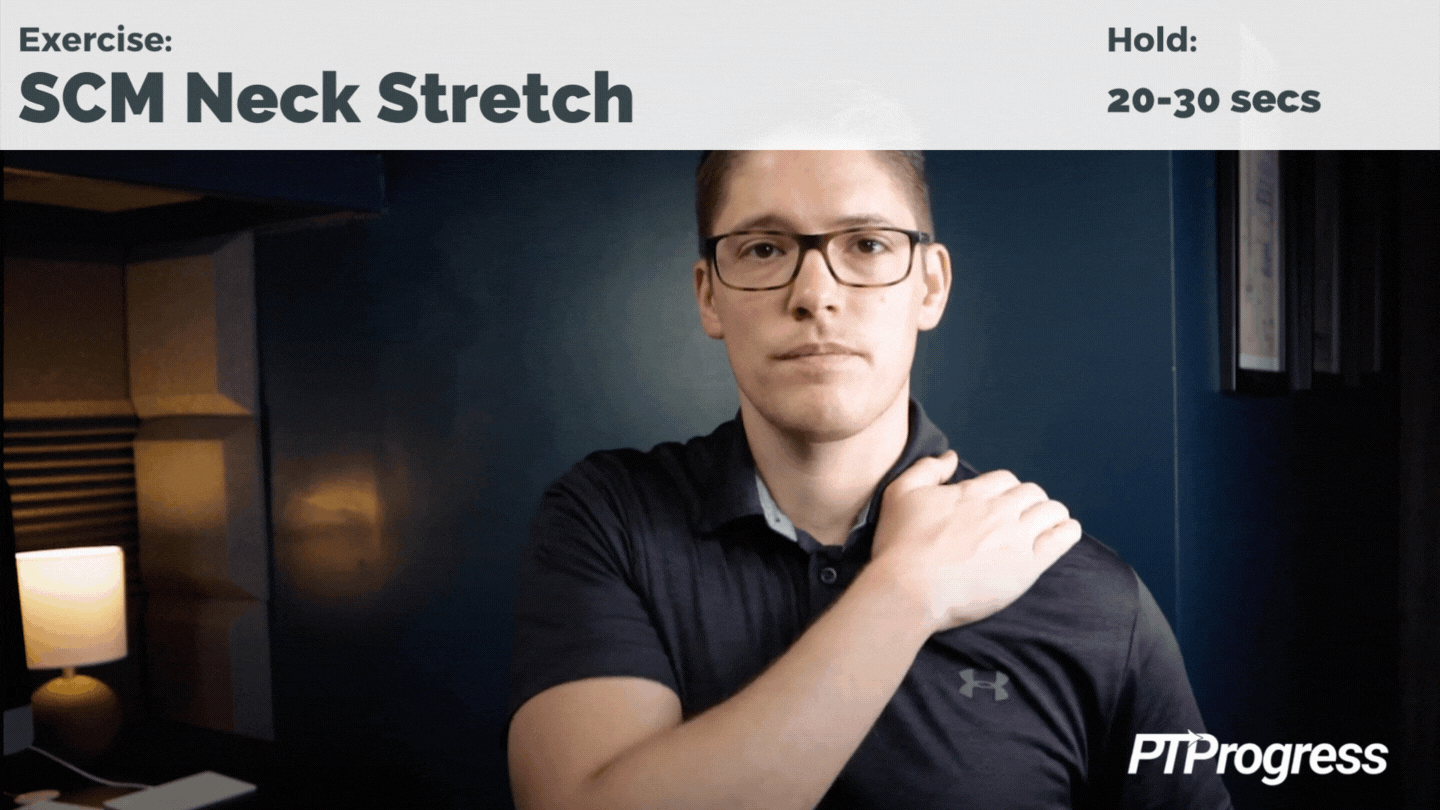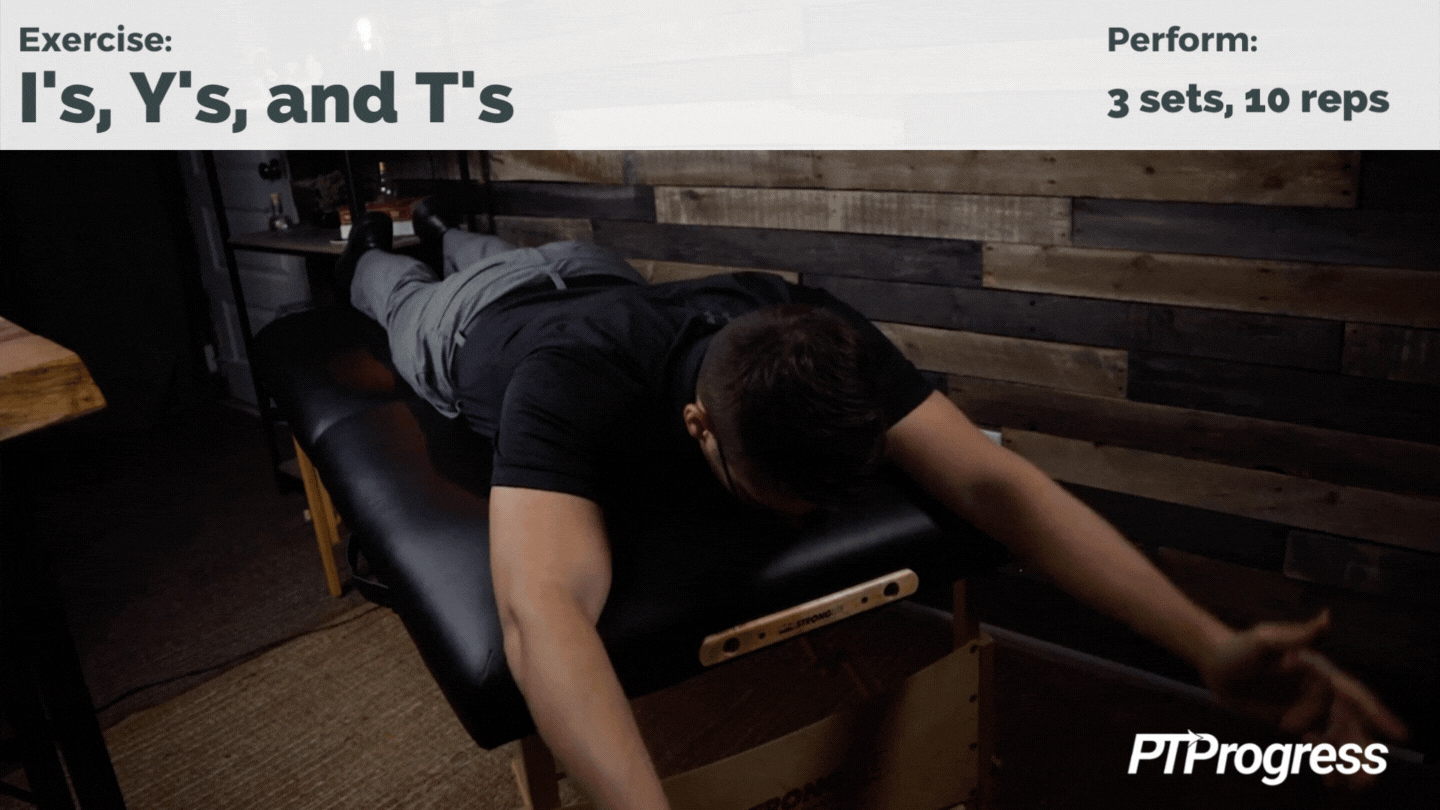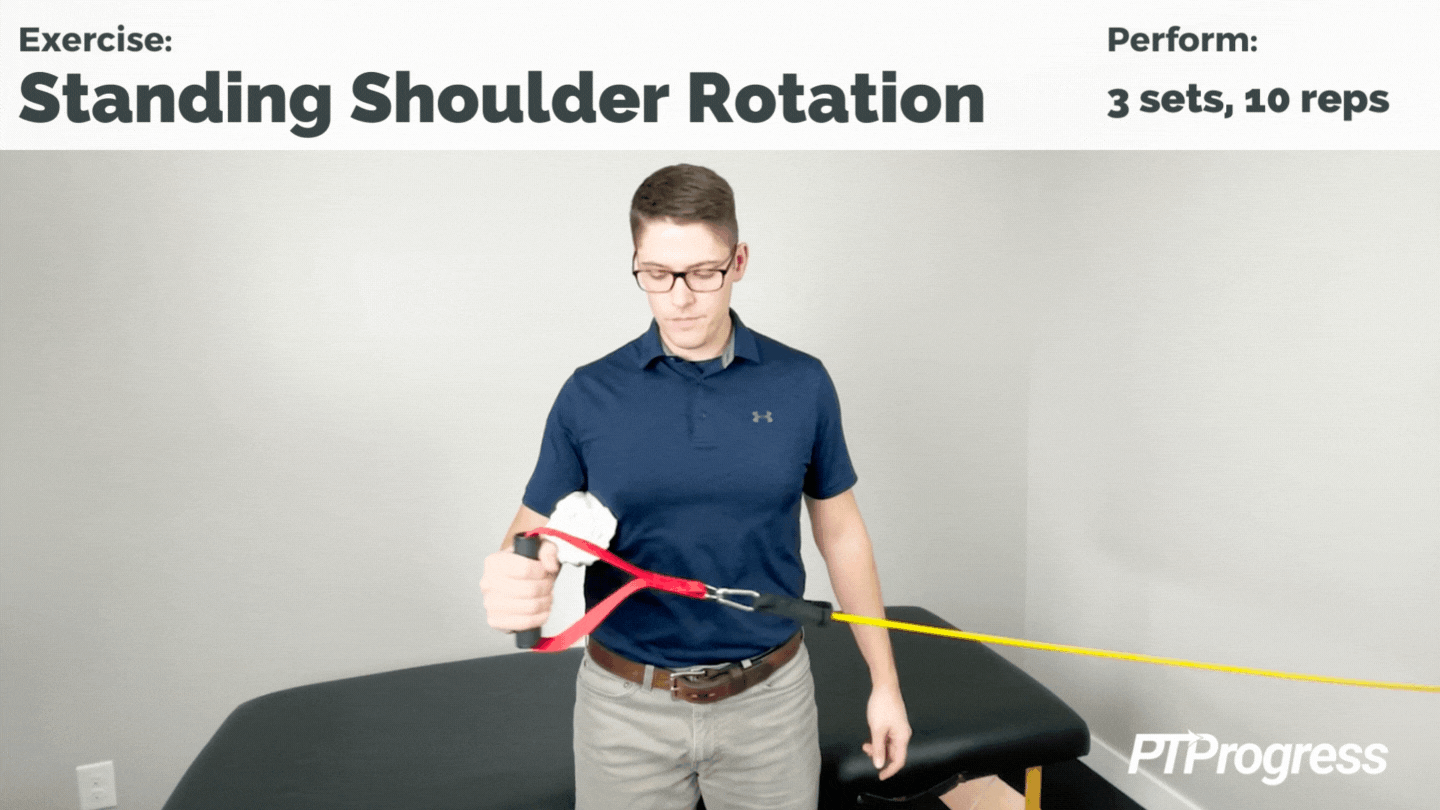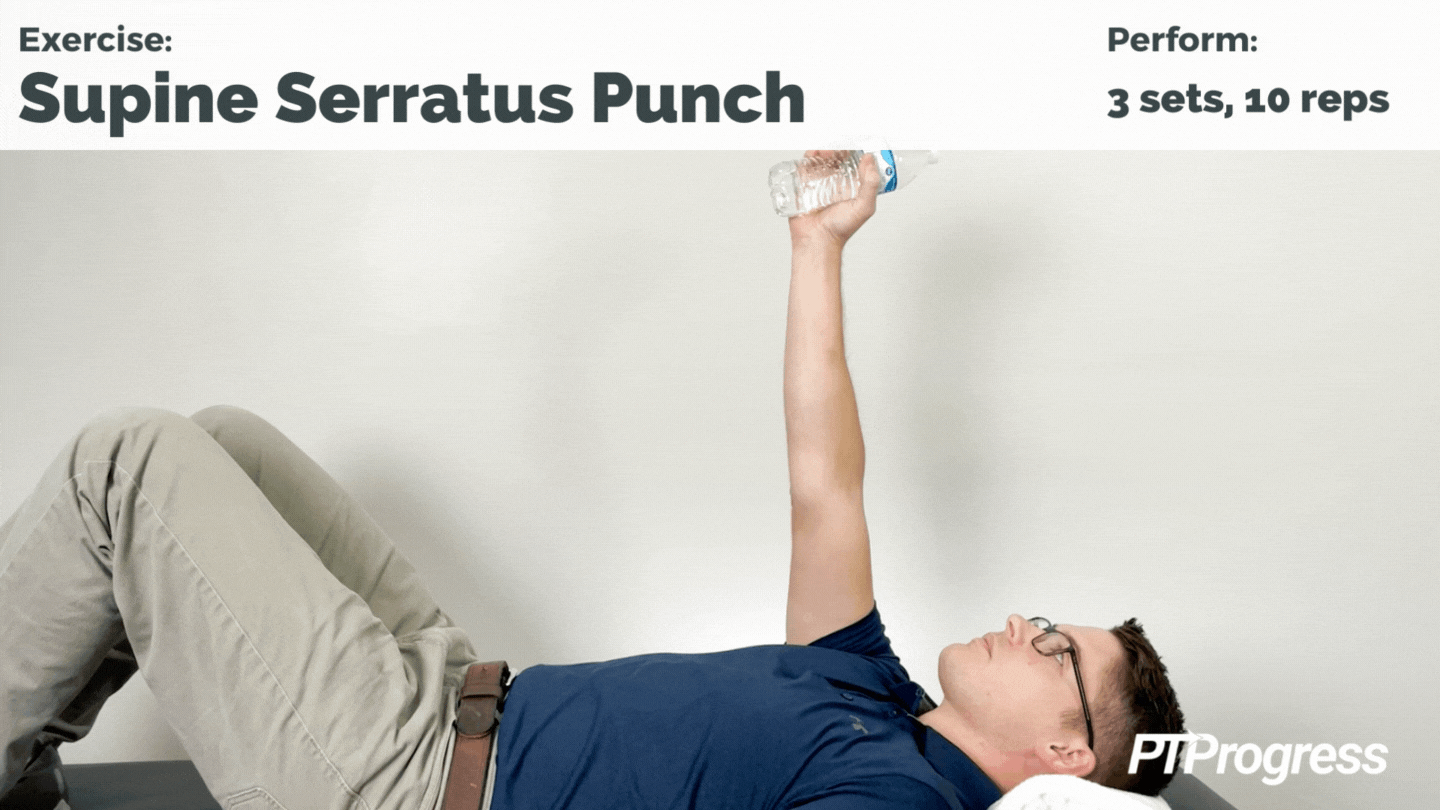
How’s your sternocleidomastoid muscle? If you’re unfamiliar with this important muscle of your neck, then I’d love to get you acquainted. As a physical therapist, I enjoy educating my patients about the muscles in their body and how they work. And in this post I’ll share everything you need to know about the sternocleidomastoid muscle – or SCM.
What is the Sternocleidomastoid muscle?
The name may be a mouthful, but the sternocleidomastoid is one of the easiest neck muscles to get to know. For one, it’s the largest muscle in the front part of your neck. And unlike the smaller intrinsic muscles, the SCM is superficial, which means you can easily see and feel it when you move your head.
Located on either side of your neck, the SCM joins three body parts: your chest, clavicle, and breastbone—hence the long name. Each SCM muscle is two-pronged, with two origin points (your collarbone and breastbone) and one insertion point behind your ear.
Sternocleidomastoid Muscle Function

Your two SCM muscles are constantly in use. They work together and independently to turn and tilt your head. Whenever you rotate your head to the side, you’re using your SCM muscle. You need both SCM to tuck your chin to your chest, and both unequally to cock your head to one side, like when you bring your ear to your shoulder.
Besides moving your head around, the SCM muscles help you breathe by lifting your chest wall.
Injuries to the SCM
Because the sternocleidomastoid is so vital for everyday activities, any injury to it can be debilitating. Whether you pulled the muscle or just slept wrong, a strained SCM is a true pain in the neck.
Acute or chronic neck stiffness is called SCM syndrome, which is often accompanied by neck pain and a decreased range of motion in the neck. People with SCM syndrome may feel dull, aching pain or sharp jolts of pain. SCM syndrome may cause tenderness at the site or even refer pain to other parts of the body, such as the shoulders, upper back, and temples.
Causes of Sternocleidomastoid Syndrome
So why does this happen? SCM syndrome can arise from a few kinds of stressors, both chronic and acute. For instance, a sudden injury like whiplash can bring on acute neck pain, while lifestyle habits such as poor posture can overwork the SCM and strain it over time. Even your sleeping posture can affect your neck, while other factors such as age and stress can make your SCM more susceptible to injury.
Ultimately, most cases of SCM syndrome involve trigger points—tight bands of muscle fibers that form when the muscle is shortened and overworked too often. These trigger points, also called muscle knots, are often sore to the touch and may refer pain to nearby muscle groups, such as your trapezius and head muscles.
Treating SCM Syndrome
If you see a physical therapist for SCM syndrome, they may recommend heat and cold therapy—such as an ice pack—massage treatment, manual stretching, and light exercise. Other modalities such as dry needling can also help release the SCM muscle.
How to relax the SCM
If you’ve ever slept wrong on your neck and woken up with a limited range of motion, you’ve probably already experienced SCM syndrome. The pain may or may not go away on its own, but you can help things along through some careful stretching and exercise.
Range of motion SCM
One of the main symptoms of SCM syndrome is a limited range of motion; you can’t turn your head all the way to one side, so you compensate by rotating your torso. But as your body heals, you’ll need to reintroduce a fuller range of motion to your sternocleidomastoid so it doesn’t stay shortened and tight.
The only problem with working on range of motion is that the weight of your shoulders is a stressor on your SCM. In a time of injury and pain, you’ll want to offload the SCM so it’s free to stretch and lengthen. So, to do that, grab a couple pillows.
Tuck one pillow under each arm so that the weight of your shoulders is supported by the pillows instead of pulling on your neck. Sit up tall, and breathe in, and then as you breathe out, slowly rotate your head to one side as far as you can comfortably go. Come back to center, and then repeat in the opposite direction.


You’ll probably notice that you have a stiffer range of motion on one side. Keep alternating directions and try to increase how far you turn your head each time, while staying relaxed and pain-free. Do this for 20-30 seconds every 20-30 minutes throughout your day.
Stretch your SCM
Besides widening your range of motion, you’ll need to also lengthen your shortened SCM. There are several ways to stretch the sternocleidomastoid muscle, but here’s one you can do on your own.
Sit up tall with your shoulders square but relaxed. You’ll want to work both sides of your SCM, but let’s start on the left side. Place your right hand on your left shoulder to stabilize it so you don’t hike your shoulder as you do this. Next, side bend your neck so your right ear moves towards that right shoulder. To deepen the stretch, look up at the ceiling. You should feel a stretch along the left side of your neck.

Hold the stretch but not your breath, and work on lengthening that tight SCM. After 30 seconds, return to center and repeat on the other side.
Contract Relax and Massage
In the PT clinic, we like to treat SCM syndrome with what’s called Contract Relax stretching. The patient lies down face-up on a table. Using my hands, I guide the patient to side bend their head along the table to the end of their neck’s range.
Next, while stabilizing their head and shoulder, I have the patient try to resist my hands and bring their head back to center—to reverse the side bend they made. By keeping their head and shoulder in place, I help the patient isolate the SCM for an isometric hold.
Contracting the muscle in this way actually makes it easier to stretch, so after they release that hold, I then have them tilt their head further. Once they’re at the new end of their range, I stabilize their head and shoulders, they contract again, relax, and stretch even further.
Contract Relax stretching works by overriding and inhibiting a reflex in the muscle that keeps the fibers tight and short. Contract Relax is also called Proprioception Neuromuscular Facilitation or Post Isometric Relaxation stretching. Either way, it’s best done under the supervision of a PT.
But you can also help your SCM relax with a little self-massage. Lie down on your bed or table so that your neck muscles are relaxed. Next, isolate your SCM by turning your head to one side and finding the large muscle along the side of your neck. From here, you can gently massage the muscle fiber between your thumb and index finger. Work along the length of the muscle until you feel a release in tension. You can massage for a few minutes at a time, as long as it isn’t painful.
Strengthening Other Muscles
When one muscle is overworked, that often means that a different set of muscles aren’t doing their job. If your SCM pain is caused by poor posture, chances are your neck muscles are having to pick up the slack from larger muscles, such as the ones in your mid back and abdomen.
Strengthening the core is essential for improving posture, and it can play a huge role in helping relieve your SCM pain. Here are a few of my favorites that we perform in the clinic.

IYTs
There are a few variations of these alphabetic exercises, but the idea is that you use your arms to draw letters in the air. Sounds fun, right?
For a harder challenge, do these while lying face-down, say, on your bed or a bench. You can also make the letters standing up while holding resistance bands. Either way, repeat the sequence of three letters 10 times for 3 sets. Over time, this exercise can help strengthen your back muscles, improve your posture, and offload the SCM.

External rotation
You can also tuck one end of the resistance band in a door and pull it laterally for some external rotation. Stand next to the door with your arms bent to 90 degrees. Hold the band in one hand—the one opposite the door—and rotate your arm out, like it’s a door swinging on a hinge. Importantly, maintain contact between your elbow and your torso the whole time.
Repeat 10 times for 3 sets per side.

Serratus Punches
Back on the bench, try performing serratus punches, which can help activate the shoulder muscles without straining the SCM. Make a fist and extend your arm straight to the ceiling. Then make a punching motion so only your shoulder blade lifts off the table. Repeat 10 times, and to make it harder, hold a light weight.
Protecting your Sternocleidomastoid Muscle
Your SCM works hard to hold up your head all day. You can lighten its load by employing proper posture while standing, sitting, and even sleeping.
The average human head weighs a whopping 11 pounds, but the more you slouch, the heavier your head will feel on your neck—up to 60 pounds when stooped over! Simply improving your posture can have a profound effect on the health of your SCM, sparing you stiffness and pain. With proper stretches and exercise, you can fix forward head posture and enjoy better SCM health.
Good posture isn’t just for daytime; poor sleeping posture can strain your neck and lead to stiffness and pain. Check out this article for tips on sleeping positions and consider upgrading your pillow to one that will better support your neck.
Summary
The sternocleidomastoid is an amazing neck muscle you use all the time, but it’s prone to overuse and stress. Do your SCM a favor by strengthening your core, stretching your neck, and improving poor posture.

